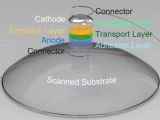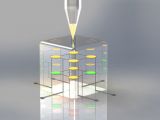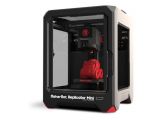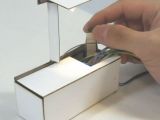Up to this point, using 3D printing technology to create products with electronic capabilities has been mostly restricted to equipping 3D printers with conductive filament, pellets or polymer tanks (depending on the type of technology).
There have been some more sophisticated breakthroughs, like that self-assembling lamp that is never far from our thoughts when we write about things like this.
However, the world is still waiting for a viable 3D printing-based mass production method. Researchers from Princeton haven't quite managed to create one, but they did make a huge step in that direction recently.
3D printed quantum dot LEDs
A team of researchers from Princeton University have created a 3D printing method that can add electronics to the surface or even the insides of various objects.
They have proven successful in adding quantum dot LEDs using only a 3D printer and some software to pull it off. And with quantum dot LEDs naturally come semiconductors as well.
This means that printable electrodes, polymers and semiconductors can all be combined in various ways to add technological capabilities to many objects.
First, solvents are used to dissolve the polymers, semiconductors and electrodes. This keeps them from damaging underlying layers. That done, a design software prints the materials using interweaving patterns.
They were able to use this approach to create very small LEDs that can be added to more or less any object, even curved ones.
As a matter of fact, in the photo gallery you'll find a 3D printed quantum dot light-emitting diode (QLED) on a 3D scanned curvilinear substrate.
In fact, curved items may turn out to be the primary market. The team envisions smart contact lenses with built-in displays. We imagine that smart glasses would be easy enough to make as well.
Implants that stimulate nerves based on light could also be produced. Maybe we have finally stumbled upon a cure for blindness? Here's hoping.
Other applications for the technology
Solar cells could be added to pretty much anything, for one. You could one day have exterior lights with solar cells embedded into them, allowing them to replenish their own power during the day. Other electronics could be given the same treatment, leading to artificial potted plants that glow in the dark in unusual patterns under their own power. Not the most practical idea, granted, but still one that's possible.
"We anticipate that this general strategy can be expanded to 3D print other classes of active devices, such as MEMS devices, transistors, solar cells, and photodiodes," Michael McAlpine, an assistant professor of mechanical and aerospace engineering at Princeton University, told Nanoweek.
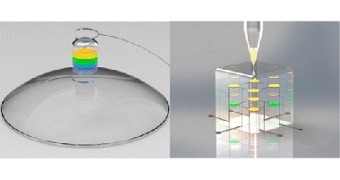
 14 DAY TRIAL //
14 DAY TRIAL // 
